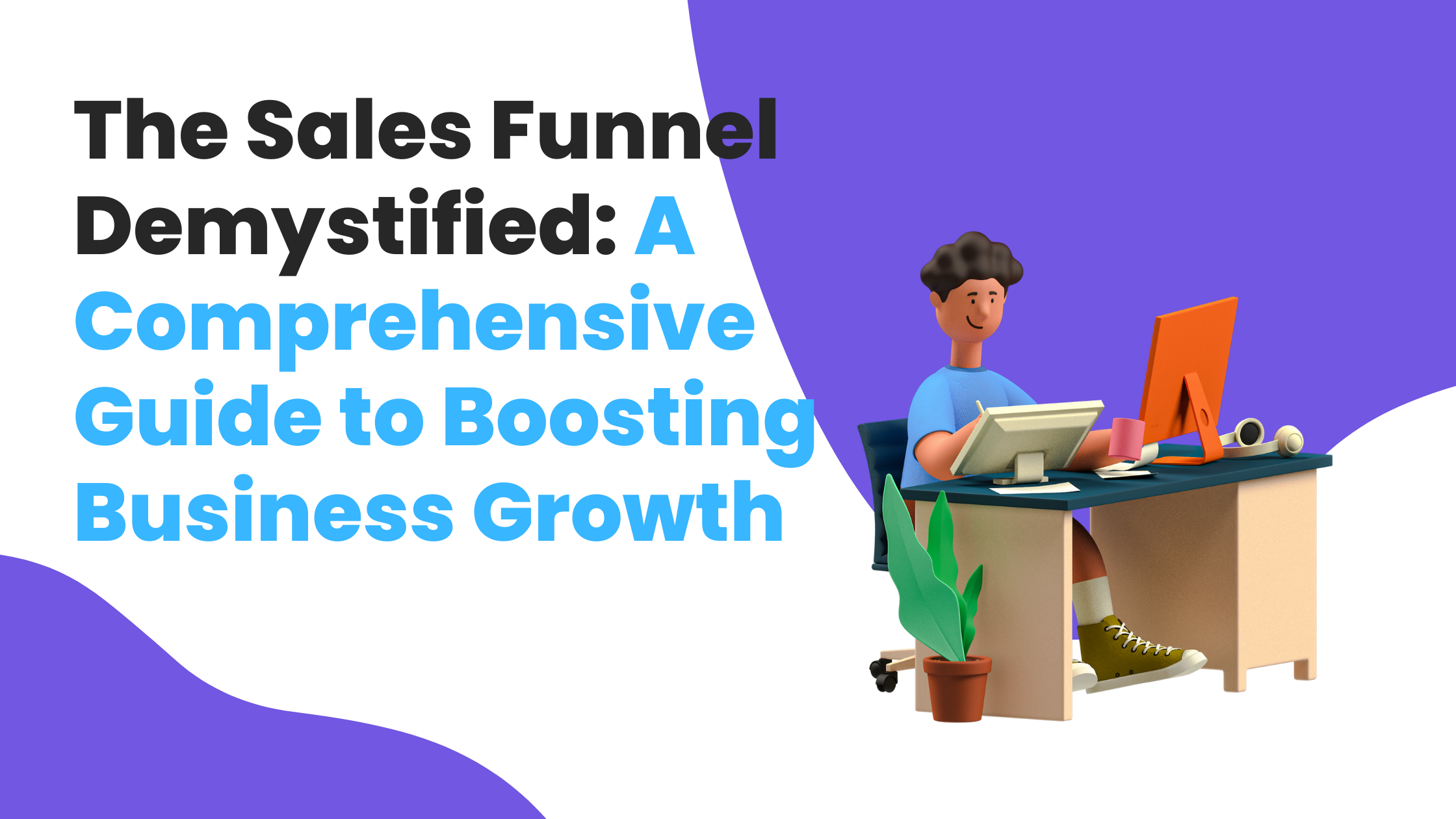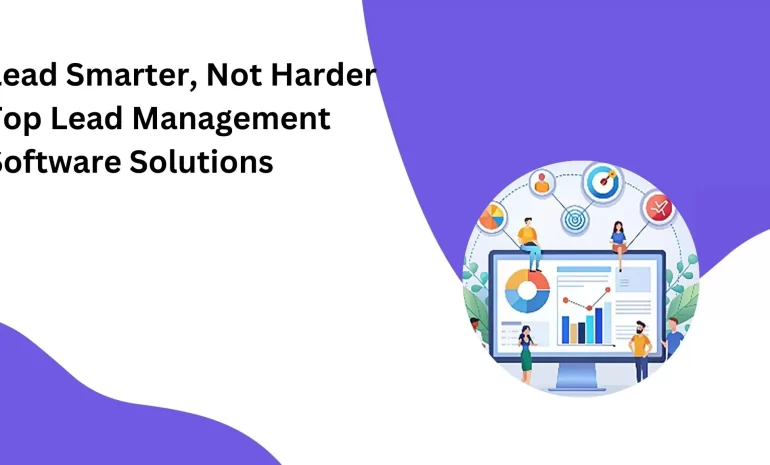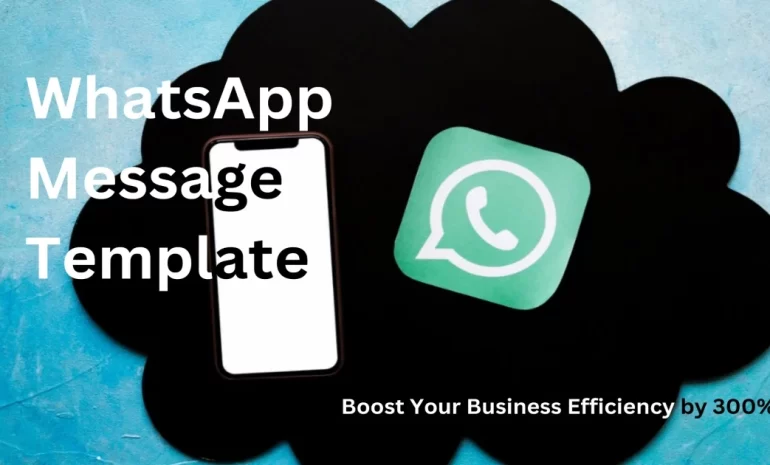In today’s fast-paced business landscape, understanding and harnessing the power of the sales funnel is not just a valuable asset; it’s a necessity. The sales funnel is the roadmap that guides potential customers from their first interaction with your brand all the way to making a purchase decision. In this in-depth guide, we’ll unravel the stages of a sales funnel, explore why they are crucial for business success, and delve into how you can leverage iNextCRM to streamline your sales funnel management. So, let’s embark on this journey together, and by the end, you’ll be equipped with the knowledge to supercharge your business growth.
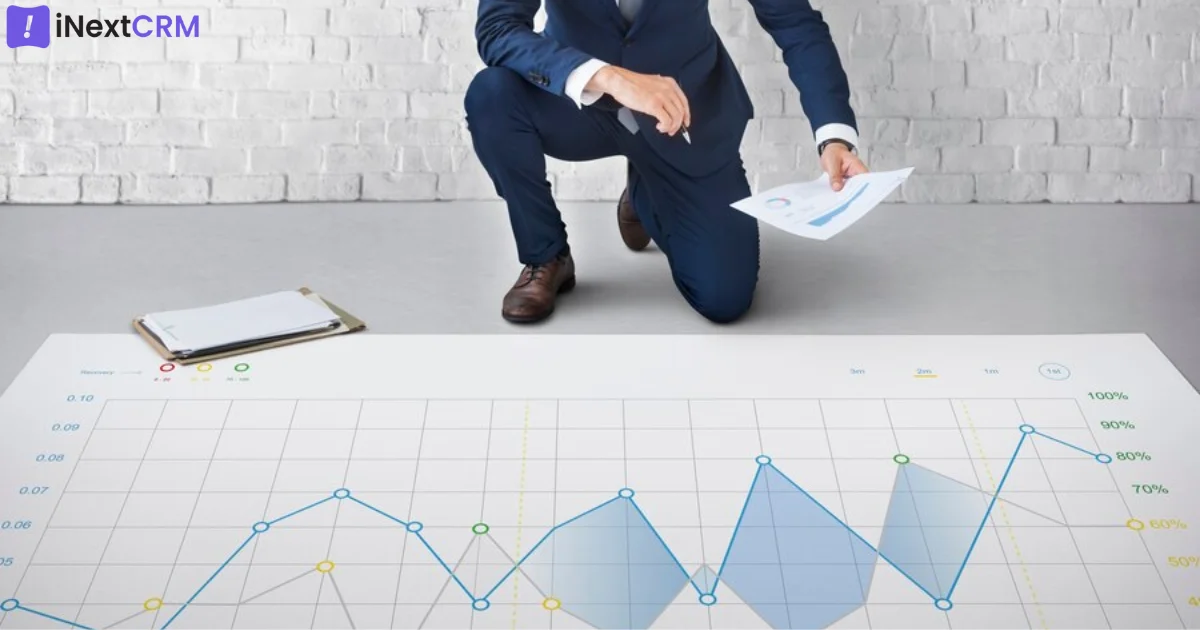
Table Of Contents
- Introduction
- The Significance of Sales Funnels
- Navigating the Guide
- What is a Sales Funnel?
- Defining the Sales Funnel
- The Sales Funnel in Action
- Sales Funnel Example: From Stranger to Customer
- The Role of Sales Funnels in Modern Business
- Why are Sales Funnels Important?
- The Business Growth Catalyst
- Tailoring Marketing Efforts
- Boosting Revenue
- Evaluating Consumer Behavior
- Understanding the Sales Funnel is Essential for Agencies for Several Reasons
- Identifying Possibilities for Improvement
- Improving Marketing and Sales Efforts
- Increasing Revenue
- Evaluating Consumer Behavior
- Let’s Take a Closer Look at Each Stage of the Sales Funnel
Stage 1: Awareness
- Casting the Wide Net
- Strategies for the Awareness Stage
- Awareness in the Digital Age
Stage 2: Interest
- Piquing Curiosity
- Strategies for Generating Interest
- The Role of Content
Stage 3: Desire
- Craving the Solution
- Strategies for Creating Desire
- The Psychology of Desire
Stage 4: Retention
- Sealing the Deal
- Strategies for Customer Retention
- The Power of Loyalty
Stage 5: Re-Engagement
- The Second Chance
- Strategies for Re-Engagement
- Leveraging Re-Engagement for Growth
- Managing Sales Funnels with CRM Software
- CRM Software: A Game Changer
- The Versatility of iNextCRM
- Real-World CRM Success Stories
Key CRM Features for Sales Funnel Management
- Lead Management
- Sales Pipeline Management
- Contact Management
- Workflow Automation
- Reporting and Analytics
- Create Your Own Sales Funnel
- Crafting Your Sales Funnel Strategy
- Stage 1: Define Your Target Market
- Stage 2: Create Awareness
- Stage 3: Generate Interest
- Stage 4: Lead Nurturing
- Stage 5: Convert Leads into Clients
- Stage 6: Retention
- Getting a Sales Funnel Back on Track
- The Challenge of a Faltering Funnel
- Strategies for Funnel Revival
- Continuous Improvement
- Measuring Sales Funnel Success
- The Metrics that Matter
- Tools for Tracking Success
- Using Data for Optimization
- Final Thoughts
- The Ever-Evolving Funnel
- The Driving Force of Business Growth
- Your Journey Begins Here
- Appendices
- Appendix A: Glossary of Key Terms
- Appendix
your brand to the ultimate conversion – making a purchase. Understanding this journey and optimizing it is crucial for businesses looking to thrive in a competitive landscape.
Consider this: without a sales funnel, your marketing and sales efforts are akin to throwing darts blindfolded. You might hit the target occasionally, but more often than not, you’ll miss the mark. However, with a well-defined sales funnel, you gain clarity and precision. You can see where your prospects are in the buying process and tailor your approach accordingly.
Navigating the Guide
This comprehensive guide is your roadmap to mastering the art of sales funnels. Whether you’re new to the concept or seeking to refine your existing strategy, we’ve got you covered. Here’s what you can expect as we embark on this journey together:
- Understanding the Basics: We’ll start by demystifying the sales funnel, providing you with a clear definition and real-world examples.
- Unlocking the Importance: Discover why sales funnels are critical for business growth and how they can supercharge your revenue.
- Essential Insights for Agencies: For agencies, understanding the sales funnel is particularly vital. We’ll explore why and how it can benefit your operations.
- A Closer Look at Each Stage: Delve deep into each stage of the sales funnel – Awareness, Interest, Desire, Retention, and Re-Engagement. Learn strategies and tactics to excel at each phase.
- CRM Software as Your Ally: Explore how Customer Relationship Management (CRM) software, especially iNextCRM, can revolutionize your sales funnel management.
- Building Your Funnel: Ready to create your own sales funnel? We’ll guide you through the process, from defining your target market to retaining loyal customers.
- Reviving Faltering Funnels: Even the best funnels can encounter challenges. Discover effective strategies to get your sales funnel back on track.
- Measuring Success: You can’t improve what you don’t measure. Learn the key metrics and tools to gauge the effectiveness of your sales funnel.
- Final Thoughts: Summarize your journey, understand the ever-evolving nature of sales funnels, and get ready to take the next step in your business growth.
- Appendices: Explore a glossary of key terms, additional resources, and real-world case studies to reinforce your understanding.
Now, let’s begin our exploration of the sales funnel, starting with the fundamental question:
Chapter 2: What is a Sales Funnel?
Defining the Sales Funnel
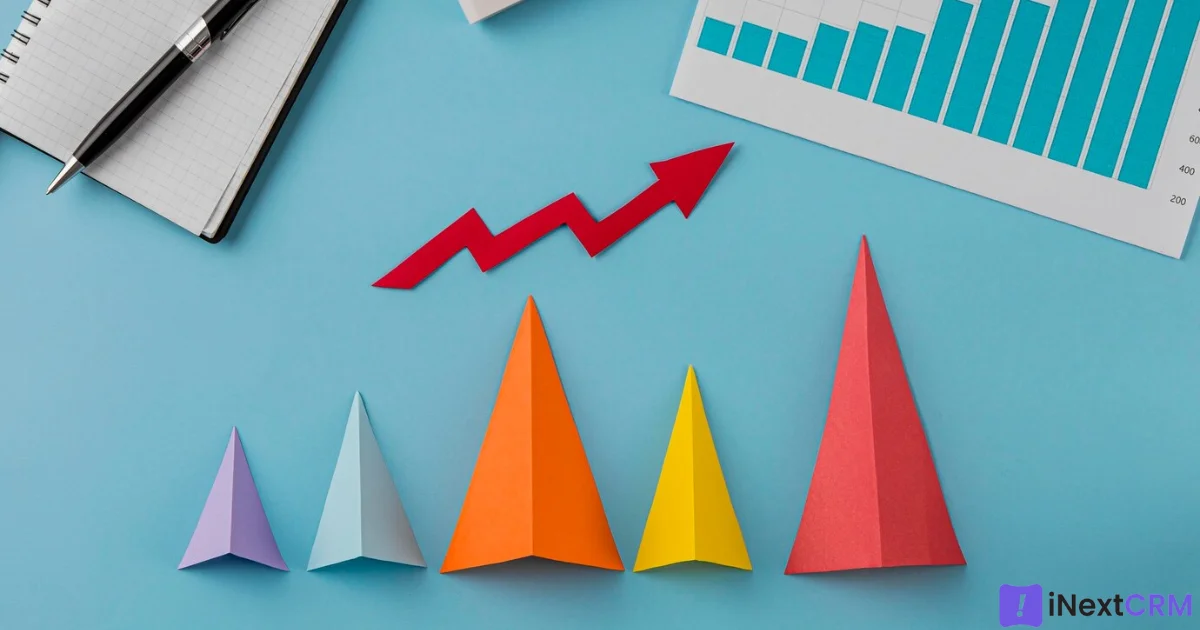
At its core, a sales funnel is a visual representation of the customer journey. It’s called a “funnel” because, like the utensil in your kitchen, it’s wide at the top and narrows down. In the context of business, this narrowing represents the process of filtering out prospects who aren’t genuinely interested in your product or service, ultimately leaving you with those who convert into customers.
Imagine your sales funnel as a series of stages or steps, with each stage serving a specific purpose. As potential customers progress through these stages, they become increasingly committed to making a purchase. Here’s a simplified breakdown of the typical stages in a sales funnel:
- Awareness: This is the widest part of the funnel, where you cast a wide net to reach as many potential customers as possible. At this stage, your goal is to grab their attention and make them aware of your brand and what you offer.
- Interest: As potential customers move into the interest stage, they’ve shown some curiosity about your offerings. Now, you need to nurture that curiosity and provide more information to keep them engaged.
- Desire: In the desire stage, your prospects have transitioned from being curious to wanting your product or service. They’ve identified a problem or need, and they believe your solution can address it.
- Retention: Once a prospect becomes a customer, the journey isn’t over. The retention stage focuses on keeping these customers satisfied and engaged to encourage repeat business.
- Re-Engagement: Some prospects might not convert initially, but they’re still interested. The re-engagement stage aims to reconnect with these potential customers and persuade them to take action.
The Sales Funnel in Action
Let’s bring the concept of a sales funnel to life with a practical example. Suppose you run an e-commerce store selling fitness equipment.
- Awareness: You start by running Facebook and Instagram ads targeting people interested in fitness. These ads showcase your range of products, from dumbbells to treadmills. Potential customers see your ads and become aware of your brand and what you offer.
- Interest: Some of those who saw your ads clicked through to your website. Now, they’re exploring your product listings, reading blog posts about effective workouts, and subscribing to your newsletter for fitness tips. They’ve moved from mere awareness to genuine interest.
- Desire: Among those interested, some have added products to their shopping carts but haven’t checked out yet. They’ve reached the desire stage; they want your fitness equipment. Perhaps they’re comparing prices or waiting for a sale.
- Retention: Finally, some of these interested prospects have made a purchase. They’re now your customers. To retain their loyalty, you send them regular emails with workout routines, offer discounts on future purchases, and provide excellent customer service.
- Re-Engagement: Back to those who showed interest but didn’t buy – you run a retargeting campaign. They see ads reminding them of the quality of your products and the benefits of staying fit. This re-engagement might be the nudge they need to make a purchase.
The Sales Funnel is an essential concept for businesses seeking to streamline their sales processes and maximize revenue. It provides a structured approach to turning prospects into loyal customers. In the digital age, where competition is fierce and consumer behavior constantly evolves, understanding and optimizing your sales funnel is not just an advantage; it’s a necessity.
Chapter 3: Why are Sales Funnels Important?
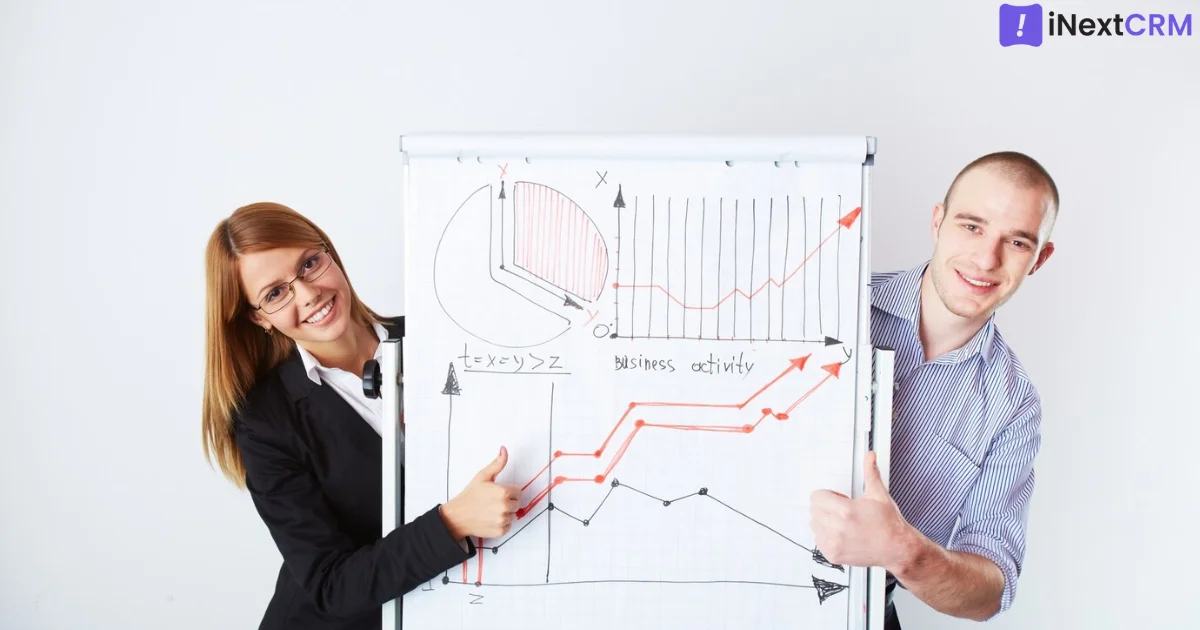
Now that we have a solid grasp of what a sales funnel is, let’s explore why it’s so vital for businesses. Understanding the importance of sales funnels is like realizing the power of a compass in a vast and unknown wilderness – it guides you toward your destination.
The Business Growth Catalyst
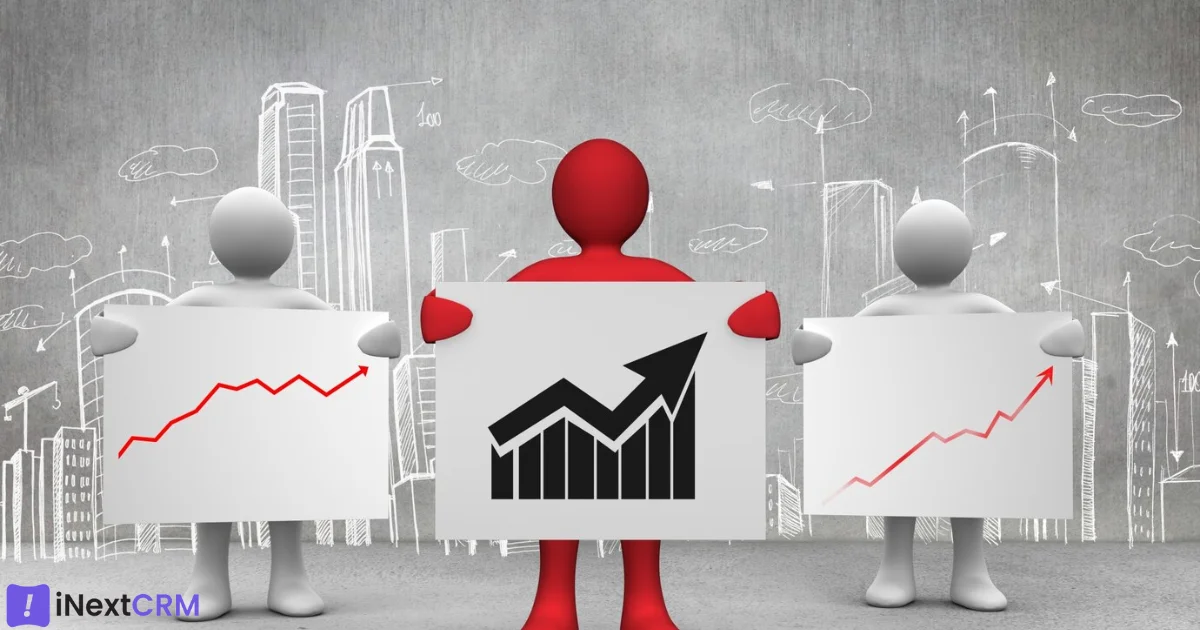
Imagine you’re embarking on a road trip to a beautiful, remote destination. Without a roadmap or GPS, finding your way would be challenging, if not impossible. Your business journey is no different. Sales funnels act as your roadmap, guiding potential customers through each stage until they reach the destination – becoming paying customers.
Sales funnels enable you to:
- Focus Your Efforts: Instead of employing a scattershot approach to marketing and sales, you can concentrate your resources on the most promising leads at each stage.
- Improve Conversion Rates: By understanding where prospects drop off in the funnel, you can optimize those stages, ensuring a higher percentage of leads make it to the next step.
- Tailor Your Messaging: At different stages of the funnel, prospects have distinct needs and questions. Sales funnels allow you to tailor your messaging to address these specific concerns.
- Identify Bottlenecks: Just as a traffic jam can delay your journey, bottlenecks in your sales funnel can hinder your business growth. Sales funnels help you pinpoint these bottlenecks so you can clear the path.
Tailoring Marketing Efforts
Sales funnels are a game-changer for marketing and sales teams. They enable businesses to create highly targeted and personalized campaigns, increasing the chances of conversion. Here’s how sales funnels empower your marketing efforts:
- Segmentation: Through the funnel, you naturally segment your audience. The awareness stage captures a broad audience, while the desire stage focuses on those showing strong interest. This segmentation allows you to send the right messages to the right people at the right time.
- Content Creation: Armed with the knowledge of where prospects are in the funnel, you can create content that speaks directly to their needs. For example, someone in the awareness stage might benefit from informative blog posts, while someone in the desire stage might respond better to product videos.
- Personalization: Personalization is a key driver of conversion. Sales funnels make it possible to send personalized emails, offers, and recommendations based on a prospect’s stage in the funnel and their previous interactions with your brand.
Boosting Revenue
At the heart of every business is the desire to increase revenue and profitability. Sales funnels are not just about guiding prospects; they’re about optimizing revenue generation. Here’s how they contribute to your bottom line:
- Higher Conversion Rates: A well-structured sales funnel leads to higher conversion rates. When you understand the needs and concerns of prospects at each stage, you can address them effectively, resulting in more conversions.
- Repeat Business: It’s not just about the first sale; it’s about keeping customers coming back. The retention stage of the funnel focuses on building loyalty and encouraging repeat purchases, which are often more profitable than acquiring new customers.
- Maximizing Customer Lifetime Value: Understanding the customer journey allows you to maximize the lifetime value of each customer. By consistently delivering value and upselling relevant products or services, you can increase the revenue each customer generates over time.
- Efficient Resource Allocation: Sales funnels help you allocate resources efficiently. You can invest more in the stages that yield the best results and adjust your strategy for underperforming areas.
Evaluating Consumer Behavior
Consumer behavior is complex and constantly evolving. What motivates a prospect to take action today might be different from what motivated them a month ago. Sales funnels provide valuable insights into consumer behavior by tracking how prospects move through the stages.
By analyzing data and understanding the patterns of behavior within your funnel, you can make data-driven decisions. This includes refining your marketing strategies, optimizing your product offerings, and improving your customer service based on what truly resonates with your audience.
In essence, understanding and leveraging sales funnels is essential for businesses looking to enhance their marketing and sales activities, optimize customer experiences, and ultimately drive revenue growth. It’s the compass that guides you through the wilderness of the business landscape, ensuring you reach your destination with confidence.
Chapter 4: Understanding the Sales Funnel is Essential for Agencies for Several Reasons
As we’ve explored, sales funnels are a fundamental concept for businesses of all sizes. However, for agencies, understanding and mastering the sales funnel is particularly critical. Agencies often serve as the bridge between businesses and their customers, making them instrumental in shaping and optimizing the customer journey. Here’s why grasping the sales funnel is essential for agencies:
Identify Possibilities for Improvement
Agencies are trusted advisors to their clients, guiding them in achieving their marketing and sales goals. To do this effectively, agencies need a deep understanding of the sales funnel. Why? Because the funnel reveals where potential customers drop off, where conversions happen, and where improvements can be made.
Imagine you’re an agency working with an e-commerce client. By analyzing their sales funnel, you discover that many potential customers abandon their shopping carts during the desire stage. Armed with this knowledge, you can recommend changes to the website, such as clearer product descriptions or easier checkout processes, to address this bottleneck.
The sales funnel acts as a diagnostic tool, allowing agencies to pinpoint areas where their clients are losing potential customers. This insight is invaluable in crafting strategies for improvement.
Improve Marketing and Sales Efforts
Agencies are tasked with developing and executing marketing and sales strategies for their clients. These strategies must be finely tuned to target potential customers at each stage of the sales funnel. Without a solid understanding of the funnel, agencies risk creating generic campaigns that miss the mark.
Let’s say you’re working with a software company that provides project management solutions. To effectively market their product, you need to differentiate between prospects in the awareness stage (who might be searching for general project management tips) and those in the desire stage (who are comparing software options).
With a deep understanding of the sales funnel, agencies can tailor their campaigns to address the unique needs and questions of prospects at each stage. This not only increases the likelihood of conversion but also showcases the agency’s expertise in delivering results.
Increase Revenue
Agencies often work on a performance-based model where their success is tied to the success of their clients. The better the agency understands and optimizes the sales funnel, the more clients can benefit from increased revenue.
Consider a digital marketing agency handling a client’s online store. By analyzing the sales funnel, the agency identifies that potential customers drop off during the interest stage because of a lack of informative content. They recommend creating engaging blog posts and videos that cater to this need.
As a result of these content improvements, more potential customers move through the funnel and make purchases. This not only boosts the client’s revenue but also strengthens the agency’s reputation as a valuable partner in driving growth.
Evaluate Consumer Behavior
Agencies serve a diverse range of clients across industries. To be effective, they must quickly adapt to the unique needs and preferences of each target audience. This requires a deep understanding of consumer behavior.
The sales funnel serves as a framework for studying consumer behavior. It allows agencies to dissect the customer journey, understand pain points, and identify touchpoints that influence decisions. Armed with this knowledge, agencies can tailor their strategies to resonate with the specific behaviors of their clients’ audiences.
For example, if an agency is working with a healthcare client, they may find that potential patients conduct extensive research online before booking appointments. Understanding this behavior, the agency can recommend content marketing strategies that position the client as a trusted source of health information.
In essence, understanding the sales funnel is not just beneficial for agencies; it’s a strategic imperative. It empowers agencies to identify improvement opportunities, fine-tune marketing and sales efforts, increase client revenue, and evaluate and respond to consumer behavior effectively.
Now that we’ve established the importance of sales funnels for agencies, let’s dive deeper into each stage of the sales funnel to understand how they function and how agencies can leverage them for success.
Chapter 5: Let’s Take a Closer Look at Each Stage of the Sales Funnel
In this chapter, we’ll explore each stage of the sales funnel in detail. We’ll uncover the strategies, tactics, and best practices that can help businesses and agencies excel at every phase of the customer journey. So, let’s begin our journey through the sales funnel, starting with the first stage:
Stage 1: Awareness
Casting the Wide Net
The awareness stage is the point of entry into the sales funnel. At this stage, potential customers are like explorers in uncharted territory. They might have a vague sense of a problem or need, but they’re far from a solution. Your goal in the awareness stage is to cast a wide net and grab their attention.
Strategies for the Awareness Stage
- Content Marketing: Create informative and engaging content that addresses the pain points and questions your target audience has. This could include blog posts, videos, infographics, and podcasts.
- Social Media: Utilize social media platforms to reach a broader audience. Share your content, engage with your followers, and run targeted ads to raise awareness.
- Search Engine Optimization (SEO): Optimize your website and content for search engines to ensure your brand appears in relevant search results.
- Paid Advertising: Invest in paid advertising campaigns on platforms like Google Ads, Facebook Ads, and LinkedIn Ads to reach potential customers based on their interests and demographics.
- Email Marketing: Build an email list and send out newsletters or updates to keep your audience informed about your products or services.
- Public Relations (PR): Collaborate with influencers or reach out to industry publications to get featured and gain exposure.
- Webinars and Events: Host webinars, workshops, or virtual events to showcase your expertise and connect with potential customers.
Awareness in the Digital Age
In the digital age, where information is abundant, capturing and retaining the attention of potential customers in the awareness stage can be challenging. To stand out, focus on delivering high-quality, relevant content that addresses real problems or interests. Engage with your audience on social media, respond to comments, and actively participate in discussions to build trust and credibility.
Stage 2: Interest
Piquing Curiosity
Once you’ve captured their attention, it’s time to transition potential customers from a state of awareness to interest. In the interest stage, prospects have shown curiosity about your brand, product, or service. They’re actively seeking more information and solutions.
Strategies for Generating Interest
- Educational Content: Provide in-depth content that dives into topics related to your industry or offerings. Whitepapers, ebooks, and in-depth guides can be powerful tools.
- Email Sequences: Develop email sequences that deliver valuable insights and solutions to your subscribers. Consider drip campaigns that gradually introduce your offerings.
- Product Demos and Samples: Offer product demos or free samples to give potential customers a taste of what you provide.
- Case Studies: Showcase real-life success stories and case studies that demonstrate the value and effectiveness of your offerings.
- Webinars and Workshops: Host educational webinars or workshops that address common challenges in your industry and present your solutions.
- Interactive Content: Create interactive quizzes, assessments, or tools that engage potential customers and provide personalized recommendations.
- Social Proof: Highlight customer testimonials, reviews, and endorsements to build trust and credibility.
The Role of Content
Content is a driving force in the interest stage. It’s your opportunity to position your brand as an authority and problem solver. Create content that not only informs but also engages and captivates your audience. Address their pain points and show them the path to a solution.
Stage 3: Desire
Craving the Solution
As potential customers progress through the funnel, they transition from being merely interested to genuinely desiring your product or service. In the desire stage, they’ve identified a problem or need, and they believe your solution can address it. This is where your offerings start to shine.
Strategies for Creating Desire
- Personalization: Offer personalized recommendations or solutions based on the prospect’s needs and preferences.
- Social Proof: To build credibility and trust, highlight positive reviews, testimonials, and case studies.
- Competitive Pricing: Consider offering competitive prices or discounts to entice customers to choose your solution.
- Limited-Time Offerings: Create a sense of urgency with limited-time offers or promotions to prompt action.
- Upselling and Cross-Selling: Offer complementary products or services that enhance the value of the customer’s purchase.
This is the time to make your most competitive offer. It could be a free trial, a coupon code, or a bonus product. In any case, make it so enticing that your lead can’t wait to take advantage of it.
Stage 4: Retention
Sealing the Deal
Congratulations! You’ve successfully converted a prospect into a customer. However, the journey doesn’t end here. The retention stage is all about keeping both existing and new customers satisfied to convert them into repeat customers and brand advocates.
Strategies for Customer Retention
- Emails: Send regular emails that provide value, such as tips, best practices, and exclusive offers for existing customers.
- Special Offers: Reward loyal customers with special discounts, early access to new products, or exclusive promotions.
- Surveys/Outreach and Follow-Ups: Gather feedback from customers through surveys and follow-up emails to understand their needs and concerns.
- Product Usage Guides: Provide guides and resources to help customers make the most of your products or services.
- Technical Assistance Literature: Offer technical support and guidance to ensure customers have a smooth experience with your offerings.
Retention is essential because satisfied customers are more likely to continue doing business with you and recommend your brand to others. Word of mouth is a powerful force, and no one can leverage it more effectively than a satisfied customer.
Stage 5: Re-Engagement
The Second Chance
The re-engagement stage is an essential step in converting prospective customers into paying customers and encouraging repeat purchases. This stage focuses on reconnecting with potential customers and qualified prospects who have previously shown interest but haven’t taken further action.
Strategies for Re-Engagement
- Feedback Calls: Reach out to prospects who showed interest but didn’t convert. A personal phone call can uncover their concerns and provide an opportunity to address them.
- Referral Programs: Encourage satisfied customers to refer friends and colleagues through referral programs.
- Re-Engagement Email Campaigns: Craft targeted email campaigns that remind prospects of the benefits of your product or service and encourage them to take action.
After all, a 5% increase in your retention may result in up to a 95% increase in your profit.
Now that we’ve explored each stage of the sales funnel, it’s evident that understanding and optimizing this process is pivotal for business growth and customer success. Businesses that carefully analyze each stage of the funnel can discover areas for improvement and strategically make changes to enhance the customer journey, increase conversions, and drive revenue growth.
In the next chapter, we’ll dive into how Customer Relationship Management (CRM) software can revolutionize sales funnel management for businesses and agencies alike.
Chapter 6: Managing Sales Funnels with CRM Software
CRM Software: A Game Changer
Managing a sales funnel effectively requires a streamlined and organized approach. This is where Customer Relationship Management (CRM) software comes into play as a game-changing tool for businesses and agencies. CRM software is designed to help you manage interactions with current and potential customers, keeping all relevant information in one centralized location. It’s a versatile solution that can enhance every stage of your sales funnel.
In this chapter, we’ll explore the capabilities and benefits of CRM software, with a special focus on iNextCRM, a leading CRM solution trusted by businesses and agencies worldwide.
The Versatility of iNextCRM
iNextCRM offers a comprehensive suite of tools and features designed to streamline sales funnel management. Here’s how iNextCRM can revolutionize your approach:
- Lead Management: iNextCRM simplifies lead management by allowing you to capture and categorize leads effortlessly. You can track the source of leads, assign them to specific sales representatives, and set follow-up reminders.
- Sales Pipeline Management: Visualize your sales pipeline with ease. iNextCRM provides a clear overview of where each lead is in the sales process, helping you prioritize and focus your efforts on high-value opportunities.
- Contact Management: Keep all your contacts in one place. iNextCRM allows you to store detailed contact information, including communication history, preferences, and interactions. This makes it easy to personalize your outreach and build stronger relationships.
- Workflow Automation: Reduce manual tasks and boost efficiency with workflow automation. iNextCRM enables you to automate repetitive processes such as lead nurturing, follow-ups, and data entry. This ensures no lead falls through the cracks.
- Reporting and Analytics: Make data-driven decisions with robust reporting and analytics tools. iNextCRM offers customizable reports and dashboards that provide insights into your sales funnel’s performance. Identify bottlenecks, conversion rates, and areas for improvement at a glance.
- Integration Capabilities: iNextCRM seamlessly integrates with popular tools and platforms such as email marketing software, e-commerce platforms, and social media. This ensures a unified ecosystem for your sales and marketing efforts.
- Mobile Accessibility: Stay connected and productive on the go. iNextCRM offers mobile apps, allowing your team to access critical information and collaborate from anywhere.
Real-World CRM Success Stories
To illustrate the impact of CRM software on sales funnel management, let’s delve into a couple of real-world success stories:
Success Story 1: E-commerce Powerhouse
Imagine an e-commerce company selling fashion apparel and accessories. They were struggling to manage their growing customer base and track their leads effectively. Customers were lost in a sea of data, and valuable leads were slipping through the cracks.
Upon implementing iNextCRM, the e-commerce company experienced significant improvements:
- Lead Tracking: All leads were captured in one central location, with detailed information about each lead’s preferences, behavior, and stage in the funnel.
- Sales Pipeline Visibility: The sales team could visualize the entire sales pipeline, identifying bottlenecks and prioritizing high-value leads.
- Personalized Marketing: The marketing team used CRM data to create highly targeted and personalized email campaigns, resulting in increased open and click-through rates.
- Automated Follow-Ups: Workflow automation in iNextCRM ensured that no lead was left without follow-up. Leads received timely and relevant communications, increasing conversion rates.
As a result, the e-commerce company saw a significant boost in revenue and customer retention. They could now nurture leads effectively, capitalize on opportunities, and deliver personalized experiences that kept customers coming back for more.
Success Story 2: Marketing Agency Mastery
A marketing agency specializing in digital advertising services faced a common challenge: keeping track of client interactions, leads, and campaign performance. They needed a solution to streamline their processes and demonstrate the ROI of their services to clients.
iNextCRM transformed their agency in the following ways:
- Client Management: iNextCRM allowed the agency to organize client data, including communication history, contract details, and campaign results, in one centralized platform.
- Campaign Tracking: With integrated reporting and analytics, the agency could track the performance of their marketing campaigns in real-time. They could demonstrate the impact of their services to clients with data-driven reports.
- Workflow Efficiency: The agency automated repetitive tasks such as sending reports and follow-up emails, freeing up their team’s time for strategic planning and creative work.
- Client Retention: By providing clients with transparent campaign results and personalized recommendations, the agency improved client satisfaction and retention rates.
The agency not only increased its client base but also strengthened its reputation as a results-driven partner in the competitive world of digital marketing.
These real-world success stories showcase how CRM software like iNextCRM can transform sales funnel management for businesses and agencies alike. With streamlined processes, better lead tracking, personalized marketing, and data-driven decision-making, CRM software is an invaluable tool for optimizing every stage of the sales funnel.
In the next chapter, we’ll guide you through the process of creating your own sales funnel, tailored to your business or agency’s unique needs and goals.
Chapter 7: Create Your Own Sales Funnel
Crafting Your Sales Funnel Strategy
A sales funnel is not a one-size-fits-all concept. Your business or agency has its unique goals, target audience, and offerings. Therefore, creating a custom sales funnel tailored to your specific needs is essential for success. In this chapter, we’ll guide you through the process of crafting your sales funnel strategy.
Stage 1: Define Your Target Market
Before you can build a sales funnel, you need a clear understanding of your target market. This involves defining your ideal customer persona(s), including demographics, interests, pain points, and buying behavior.
Steps to Define Your Target Market:
- Market Research: Conduct thorough market research to identify your potential customer base. Analyze industry trends, competitor offerings, and customer reviews to gain insights.
- Create Customer Personas: Develop detailed customer personas representing your ideal customers. Consider factors such as age, gender, location, job title, challenges, and goals.
- Segmentation: Divide your target market into segments based on common characteristics. This segmentation will guide your marketing efforts in later stages.
- Problem-Solution Fit: Understand the specific problems or needs your product or service addresses within your target market.
- Buying Behavior: Analyze how your potential customers make purchasing decisions. Do they prefer to research extensively before buying, or are they impulse buyers?
Once you’ve defined your target market, you can start building your sales funnel around their preferences, needs, and behaviors.
Stage 2: Create Awareness
With your target market defined, it’s time to cast a wide net and create awareness. The goal is to make potential customers aware of your brand, product, or service. Awareness lays the foundation for the rest of the funnel.
Strategies for the Awareness Stage (Tailored to Your Target Market):
- Content Creation: Develop content that resonates with your target market’s interests and challenges. This content could include blog posts, videos, infographics, or podcasts.
- Social Media: Identify the social media platforms where your target audience spends the most time. Create engaging content and run targeted ads on these platforms.
- SEO Optimization: Optimize your website and content for search engines to ensure your brand appears in relevant search results for your target market.
- Paid Advertising: Invest in paid advertising campaigns that align with the online behavior of your target audience.
- Email Marketing: Build an email list tailored to your target market and send out content and updates that resonate with their interests.
- Public Relations: Leverage PR opportunities that align with your target market’s preferences and challenges.
Your goal in this stage is to capture the attention of your target market and provide them with valuable information or solutions.
Stage 3: Generate Interest
As potential customers move into the interest stage, they’ve shown curiosity about your offerings. Now, you need to nurture that curiosity and provide more information to keep them engaged.
Strategies for Generating Interest (Tailored to Your Target Market):
- Educational Content: Develop in-depth content that delves into topics of interest to your target market. Provide valuable insights and solutions to their challenges.
- Email Sequences: Create email sequences that deliver relevant and informative content to subscribers based on their interests and needs.
- Product Demos and Samples: Offer demonstrations or free samples that showcase the value of your product or service to your target audience.
- Case Studies: Share real-life success stories and case studies that demonstrate how your offerings have benefited customers similar to your target market.
- Webinars and Workshops: Host webinars or workshops that address common challenges within your target market and present your solutions.
- Interactive Content: Create interactive quizzes, assessments, or tools that engage your target audience and provide personalized recommendations.
The goal in this stage is to deepen their interest in your offerings and position your brand as a trusted source of solutions.
Stage 4: Lead Nurturing
As potential customers move through the funnel, they transition from being merely interested to genuinely desiring your product or service. In the desire stage, they’ve identified a problem or need, and they believe your solution can address it.
Strategies for Lead Nurturing (Tailored to Your Target Market):
- Personalization: Offer personalized recommendations or solutions based on the prospect’s needs and preferences.
- Social Proof: Showcase positive reviews, testimonials, and case studies that build credibility and trust.
- Competitive Pricing: Consider offering competitive prices or discounts to entice customers to choose your solution.
- Limited-Time Offerings: Create a sense of urgency with limited-time offers or promotions to prompt action.
- Upselling and Cross-Selling: Offer complementary products or services that enhance the value of the customer’s purchase.
Your goal in this stage is to make your most competitive offer and encourage potential customers to take action.
Stage 5: Convert Leads into Clients
At the conversion stage, potential customers take the final step and become paying clients. This stage involves closing the deal, whether it’s making a sale, securing a contract, or gaining a commitment.
Strategies for Conversion (Tailored to Your Target Market):
- Clear Calls to Action (CTAs): Ensure your website and content have clear and compelling CTAs that guide potential customers toward the desired action.
- Streamlined Checkout Process: If you’re an e-commerce business, streamline the checkout process to reduce friction and cart abandonment.
- Direct Communication: For service-based businesses, engage in direct communication with potential clients to address their questions and concerns.
- Negotiation: Be prepared to negotiate terms and pricing to close the deal while ensuring it remains mutually beneficial.
- Confirmation and Follow-Up: Immediately confirm the transaction or agreement and follow up with post-conversion information or support.
Your goal in this stage is to secure the commitment of potential customers and convert them into clients.
Stage 6: Retention
Once a prospect becomes a customer, the journey isn’t over. The retention stage focuses on keeping these customers satisfied and engaged to encourage repeat business.
Strategies for Customer Retention (Tailored to Your Target Market):
- Emails: Send regular emails that provide value, such as tips, best practices, and exclusive offers for existing customers.
- Special Offers: Reward loyal customers with special discounts, early access to new products, or exclusive promotions.
- Surveys/Outreach and Follow-Ups: Gather feedback from customers through surveys and follow-up emails to understand their needs and concerns.
- Product Usage Guides: Provide guides and resources to help customers make the most of your products or services.
- Technical Assistance Literature: Offer technical support and guidance to ensure customers have a smooth experience with your offerings.
Your goal in this stage is to keep customers satisfied, engaged, and coming back for more.
By tailoring each stage of your sales funnel strategy to your target market’s preferences, needs, and behavior, you’ll increase the likelihood of successful conversions and long-term customer relationships.
In the next chapter, we’ll explore what to do when your sales funnel encounters challenges and how to get it back on track.
Chapter 8: Getting a Sales Funnel Back on Track
The Challenge of a Faltering Funnel
Sales funnels are dynamic systems, and challenges can arise at any stage. Whether your funnel is experiencing a drop in conversion rates, a decline in lead quality, or stagnation in growth, addressing these challenges is crucial for maintaining and boosting business success.
In this chapter, we’ll explore common issues that can affect your sales funnel and provide effective strategies to get it back on track.
Strategies for Funnel Revival
- Identify Bottlenecks
When your sales funnel encounters challenges, it’s essential to pinpoint where the issues are occurring. Analyze data and metrics to identify bottlenecks – stages where potential customers drop off or where the conversion rates are lower than expected.
Once you’ve identified bottlenecks, consider these strategies:
- Optimize the Content: Review the content and messaging at the bottleneck stage. Is it addressing potential concerns or objections? Make necessary adjustments to better align with customer needs.
- Streamline the Process: Simplify and streamline the steps required for potential customers to move through the bottleneck stage. Reduce friction and make it easier for them to take the desired action.
- A/B Testing: Experiment with different approaches and messages to see which ones perform better at the bottleneck stage. A/B testing can reveal insights into what resonates with your audience.
- Personalization: Personalize your messaging and offers to address the specific needs and preferences of potential customers at the bottleneck stage.
- Improve Lead Quality
If you’re experiencing a high volume of leads but low conversion rates, it may indicate a lead quality issue. Not all leads are equal, and focusing on high-quality leads can significantly improve your funnel’s performance.
Consider these strategies:
- Lead Scoring: Implement lead scoring to identify and prioritize high-quality leads. Assign scores based on factors such as engagement, behavior, and demographics.
- Refine Targeting: Review your targeting criteria to ensure you’re attracting leads that are more likely to convert. Adjust your marketing strategies to reach a more relevant audience.
- Content Relevance: Ensure that your content is highly relevant to your target audience’s needs and challenges. Tailor your messaging to resonate with high-quality leads.
- Nurture Leads: Implement lead nurturing campaigns to guide leads through the funnel gradually. Provide valuable content and build relationships with potential customers over time.
- Boost Conversion Rates
Low conversion rates are a common challenge in sales funnels. If potential customers are showing interest but not taking the desired action, it’s time to focus on improving your conversion strategies.
Consider these strategies:
- Clear CTAs: Review your calls to action (CTAs) and make sure they are clear, compelling, and prominently displayed.
- Reduce Friction: Simplify the conversion process. If it’s too complicated or time-consuming, potential customers are more likely to drop off.
- Social Proof: Highlight social proof, such as positive reviews, testimonials, and endorsements, to build trust and credibility.
- A/B Testing: Continuously test different elements of your landing pages and conversion forms to determine what drives higher conversion rates.
- Remarketing: Implement remarketing campaigns to re-engage potential customers who didn’t convert initially.
- Address Customer Concerns
Sometimes, potential customers have concerns or objections that prevent them from moving forward in the funnel. It’s essential to address these concerns proactively.
Consider these strategies:
- FAQs and Resources: Create a frequently asked questions (FAQs) section and provide resources that address common customer concerns.
- Live Chat Support: Offer live chat support on your website to assist potential customers in real-time and address their questions or objections.
- Trust Signals: Display trust signals, such as secure payment icons, privacy policies, and satisfaction guarantees, to alleviate concerns about security and reliability.
- Customer Testimonials: Showcase customer testimonials that demonstrate how others have successfully benefited from your product or service.
- Refine Your Follow-Up Strategy
Effective follow-up is crucial for nurturing leads and converting them into customers. If your follow-up strategy isn’t yielding the desired results, it’s time to refine it.
Consider these strategies:
- Automated Follow-Up: Implement automated email sequences that deliver timely and relevant content to leads based on their behavior and preferences.
- Personalized Outreach: Personalize your follow-up communications to address specific interactions and interests of leads.
- Multi-Channel Engagement: Use a combination of email, social media, and other communication channels to stay connected with leads.
- Segmentation: Segment your leads based on their behavior and engagement levels to tailor your follow-up strategies.
By addressing these common challenges and implementing effective strategies, you can get your sales funnel back on track, increase conversion rates, and drive business growth.
Chapter 9: Leveraging Sales Funnel Analytics for Success
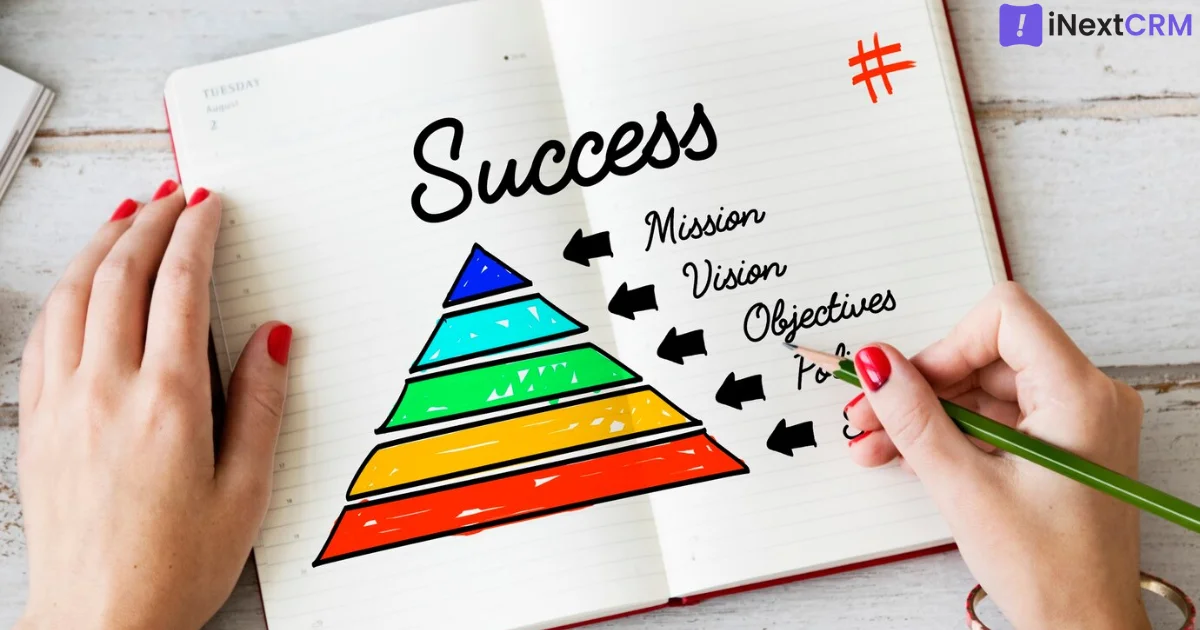
The Power of Sales Funnel Analytics
Sales funnels are dynamic, evolving systems that require ongoing monitoring and optimization. Sales funnel analytics provide the insights you need to make informed decisions, identify areas for improvement, and maximize your conversion rates.
In this chapter, we’ll explore the importance of sales funnel analytics and provide guidance on how to leverage them effectively.
Key Sales Funnel Metrics
To assess the health and performance of your sales funnel, it’s essential to track and analyze key metrics at each stage. Here are some of the most important metrics to monitor:
- Traffic Metrics
- Traffic Volume: Measure the total number of visitors to your website or landing pages.
- Traffic Sources: Identify the channels and sources driving traffic to your funnel (e.g., organic search, social media, paid advertising).
- Awareness Stage Metrics
- Page Views: Track how many pages visitors view during their initial interaction with your site.
- Bounce Rate: Measure the percentage of visitors who leave your site without taking any action.
- Time on Page: Assess how long visitors spend on your content.
- Interest Stage Metrics
- Engagement: Monitor interactions with your content, such as likes, shares, comments, and downloads.
- Email Subscription Rate: Track the percentage of visitors who subscribe to your email list.
- Desire Stage Metrics
- Conversion Rate: Calculate the percentage of leads who take the desired action (e.g., sign up, request a demo, add to cart).
- Abandonment Rate: Measure the rate at which potential customers abandon their cart or abandon a sign-up process.
- Retention Stage Metrics
- Customer Retention Rate: Assess the percentage of customers who continue to engage with your brand or make repeat purchases.
- Customer Lifetime Value (CLV): Calculate the average value a customer generates over their entire relationship with your business.
- Re-Engagement Stage Metrics
- Re-Engagement Rate: Track the success of re-engagement campaigns in bringing back inactive leads or customers.
- Reactivation Rate: Measure how effectively you revive leads or customers who have shown previous interest.
Implementing Sales Funnel Analytics
To leverage sales funnel analytics effectively, follow these steps:
- Set Clear Goals
Start by defining specific goals for each stage of your sales funnel. What conversion rates are you aiming for? What key actions do you want visitors to take? Clear goals provide a basis for measurement and improvement.
- Choose the Right Analytics Tools
Select analytics tools that align with your goals and offer the features you need. Google Analytics is a widely used tool for tracking website and funnel performance. Marketing automation platforms, CRM software, and e-commerce platforms often include built-in analytics.
- Track and Segment Data
Implement tracking codes and tags to collect data at each stage of your funnel. Segment your data to gain deeper insights into different audience segments and sources of traffic.
- Analyze Metrics Regularly
Regularly review your analytics data to identify trends, patterns, and areas for improvement. Look for drop-off points in the funnel and assess which channels or campaigns are most effective.
- A/B Testing
Conduct A/B tests to experiment with changes in your funnel, such as different CTAs, landing page designs, or email subject lines. Analyze the results to determine which variations lead to better outcomes.
- Optimize for Mobile
Ensure that your funnel is mobile-responsive and that you track mobile-specific metrics. Mobile optimization is crucial, as many users access websites and content on mobile devices.
- Implement Marketing Automation
Use marketing automation tools to streamline follow-up and nurturing processes. These tools can track user behavior and deliver personalized content and messages.
- Customer Feedback
Gather feedback from customers and leads through surveys and direct outreach. Their insights can help you understand pain points and make necessary improvements.
- Benchmarking
Compare your funnel performance to industry benchmarks to gauge how well you’re doing compared to competitors or peers.
- Iterate and Improve
Based on your analysis, continuously make improvements to your sales funnel. Experiment with new strategies, refine messaging, and adjust your tactics to maximize conversion rates.
Common Analytics Challenges and Solutions
While sales funnel analytics offer valuable insights, businesses often face challenges in the process. Here are some common challenges and solutions:
Challenge 1: Data Overload
With an abundance of data available, it can be overwhelming to determine which metrics to focus on. Solution: Prioritize key performance indicators (KPIs) aligned with your goals and regularly review them.
Challenge 2: Incomplete Data
Incomplete or inaccurate data can lead to flawed analysis. Solution: Ensure proper tracking implementations, use data validation checks, and cross-reference data from multiple sources.
Challenge 3: Lack of Time and Resources
Many businesses struggle to allocate sufficient time and resources to analytics. Solution: Make analytics a priority, and consider investing in training or hiring experts if necessary.
Challenge 4: Misinterpretation of Data
Interpreting data incorrectly can lead to misguided decisions. Solution: Educate yourself and your team on data analysis best practices or seek external expertise.
Challenge 5: Resistance to Change
Implementing changes based on analytics findings can face resistance. Solution: Communicate the benefits of data-driven decision-making to all stakeholders and involve them in the process.
Challenge 6: Scaling Analytics
As your business grows, scaling your analytics efforts can be challenging. Solution: Invest in scalable analytics tools and processes that can accommodate growth.
Conclusion
Sales funnel analytics are a powerful tool for understanding and optimizing the customer journey. By setting clear goals, tracking relevant metrics, and regularly analyzing data, you can make informed decisions, enhance your funnel’s performance, and ultimately drive business growth.
